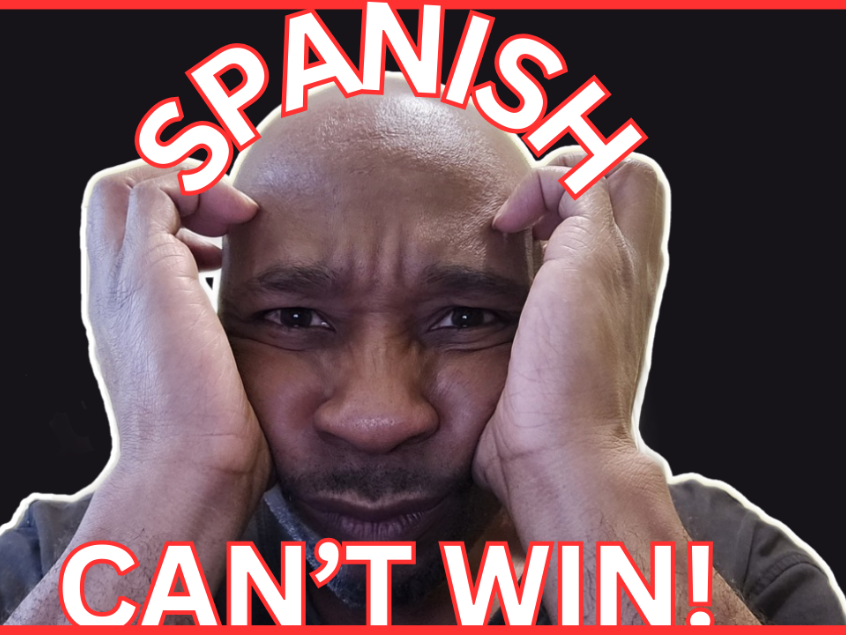Spanish Verbs for Beginners: An Easy Primer
Hey, today we’re diving into Spanish Verbs for Beginners! I’m gonna keep it lite and start you off with regular Spanish verbs (there are irregular verbs too, but I’m not gonna bog you down with all that right now). Verbs are essential in any language – especially in the Spanish language. So, without further ado, let’s get started!
Follow along with the video for best results:
What Are Verbs?
Verbs are action words: things like “to speak,” “to eat,” or “to live.” In Spanish, verbs are just as essential as they are in English. The good news is that Spanish verbs follow clear patterns once you know the rules.
Here are some examples of verbs in both English and Spanish:
- Hablar – To speak
- Comer – To eat
- Vivir – To live
Notice how in English, we use “to speak,” but in Spanish, it’s just one word: hablar. The same goes for “to eat” (comer) and “to live” (vivir).
Understanding Spanish Verb Endings
Spanish verbs end in -ar, -er, or -ir. These endings determine how the verb is conjugated. Once you recognize these endings, you’re already ahead of the game!
The Infinitive Form
Every verb in Spanish starts in its simplest form: the infinitive. Think of this as the base form: the version you’ll find in a dictionary. For example:
- Hablar (to speak) – Ends in -ar
- Comer (to eat) – Ends in -er
- Vivir (to live) – Ends in -ir
Conjugation Basics
Now for the fun part: conjugation! In Spanish, you change the verb ending to match the subject (the person doing the action). Here’s how the verb hablar (to speak) is conjugated in the present tense:
| Subject | Conjugation |
|---|---|
| Yo (I) | Hablo |
| Tú (You, informal) | Hablas |
| Él/Ella/Usted (He/She/You formal) | Habla |
| Nosotros/Nosotras (We: all males or mixed group/We: all females) | Hablamos |
| Ellos/Ellas/Ustedes (They: all males or mixed grp./They: all females/You all “Y’all” | Hablan |
Notice how the endings change depending on the subject. This is why Spanish doesn’t always need pronouns. That’s because the verb itself tells you who is doing the action.
Practice Makes Progress
Now it’s your turn! Let’s conjugate the verb comer (to eat) together:
- Yo como – I eat
- Tú comes – You eat
- Él/Ella/Usted come – He/She/You formal eat
- Nosotros/Nosotras comemos – We eat
- Ellos/Ellas/Ustedes comen – They/You all eat
Great job! Be sure to practice out loud as it helps to build your confidence and good Spanish pronunciation. You got this!
Why Learning Spanish Is Worth It
By the way, I’m writing this from sunny Lima, Peru! (well, sunny for now lol). Learning Spanish has allowed me to travel to Spanish-speaking countries with confidence. And you can do it too!
So, let’s recap. The 3 types of Spanish verbs are:
- -ar verbs
- -er verbs
- -ir verbs
-ar verbs are the most common and have the easiest conjugations, so they’re a great place to start.
Final Thoughts
Remember, practice makes progress! Forget perfection, just keep on improving! Learning Spanish is a journey, not a destination. So every little bit helps.
In today’s Spanish Verbs for Beginners lesson, we covered regular Spanish verbs in the present tense. But Spanish also has irregular verbs and different tenses (past, future, etc.). But don’t worry, we’ll cover those in upcoming lessons.
So be sure to subscribe below because you don’t miss a thing!
And until next time, remember: You don’t have to be perfect, just good enough.
Subscribe Now for more Spanish-Learning Tips



Thanks!
De nada. ¡Bienvenido!
You’re welcome. Welcome!
Helps me a lot! I’m starting to wrap my mind around all this stuff.
Great, practice makes progress!
¡Bueno, la práctica hace progreso!
This is just what I was looking for. I just started learning Spanish this year and I already see how useful verbs can be.
Me alegro por ti. ¡Sigue aprendiendo!
I’m happy for you. Keep learning!